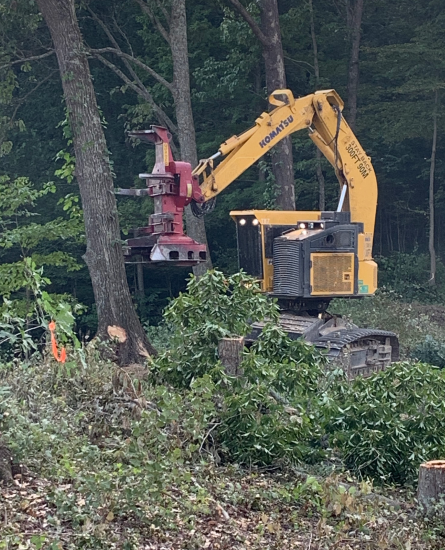
Project Owner
Electric Transmission Company
Project Budget
Over $100 million
Location
Boone / Kanawha counties in West Virginia near Charleston
Work
Cleared over 37 miles of right-of-way (469 acres) and 18.5 miles of off-ROW access roads (134.5 acres)
Time
81,545 hours on the project and over 400 days

This project was designed to increase reliability and strengthen the power grid in Boone and Kanawha counties through significant upgrades by replacing aging transmission equipment with new and modern technology.
Integrity Tree Services overcame many challenges throughout this project including terrain, weather, and working in 3 separate active coal mines.
Terrain
Our crews overcame some of the most difficult terrain that Integrity Tree Services has ever worked in. We experienced everything from steep, rocky terrain with cliffs to deep valleys and slopes so great that the uphill trees were towering over the existing, energized transmission lines.
Weather
Weather was a major factor over the life of the 3-year project. The temperatures ranged from the teens in the winter to 90’s in the summer. There were multiple landslides, including one requiring a total re-route of the new transmission line.
Route
The route of the project ran through 3 active coal mines, requiring additional safety measures and steps to complete the work. One mine was actively blasting and crews had to plan for an almost constant flow of coal trucks and equipment running the haul roads while our team was performing tree clearing operations.
Integrity Tree Services exceeded expectations in our quality of work and work ethic throughout the project.
We used many types of equipment on the project. Our mechanized clearing crews had a tracked self-leveling feller buncher with an intermittent saw head, an excavator forestry mower, a bulldozer, a tracked forestry mower, a wheeled mechanical side trimmer, skid steer with forestry mower and grapple attachments, an all-terrain utility vehicle and on occasion a bucket truck with brush chipper for residential and maintained areas. Much of the work was done with manual crews where the equipment couldn’t reach or operate safely.



